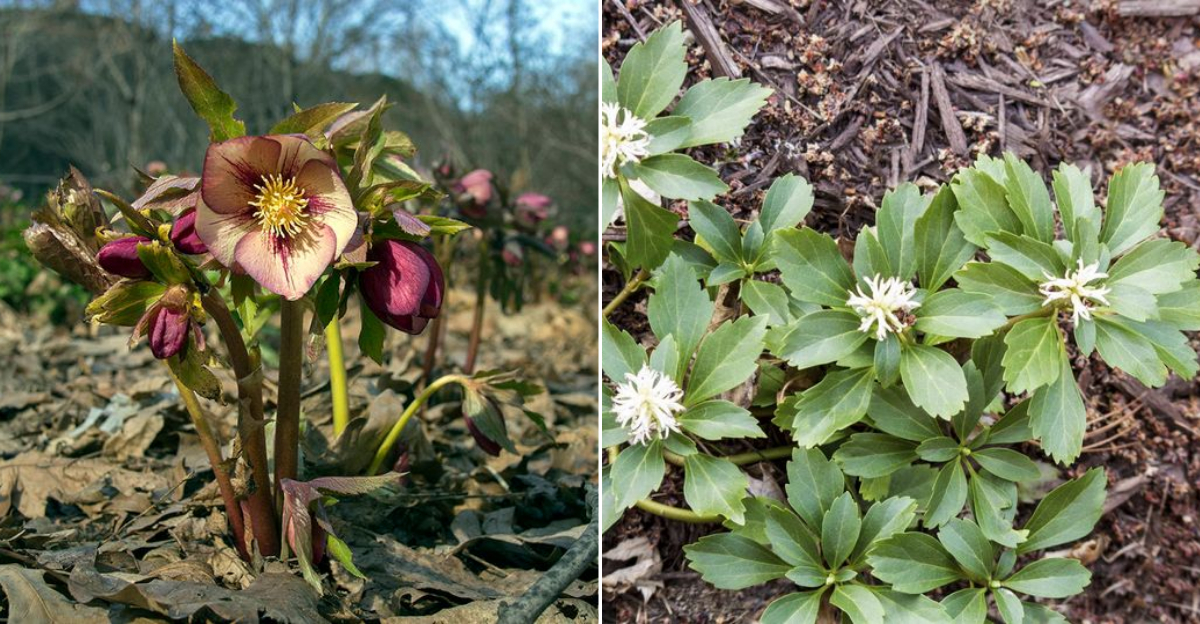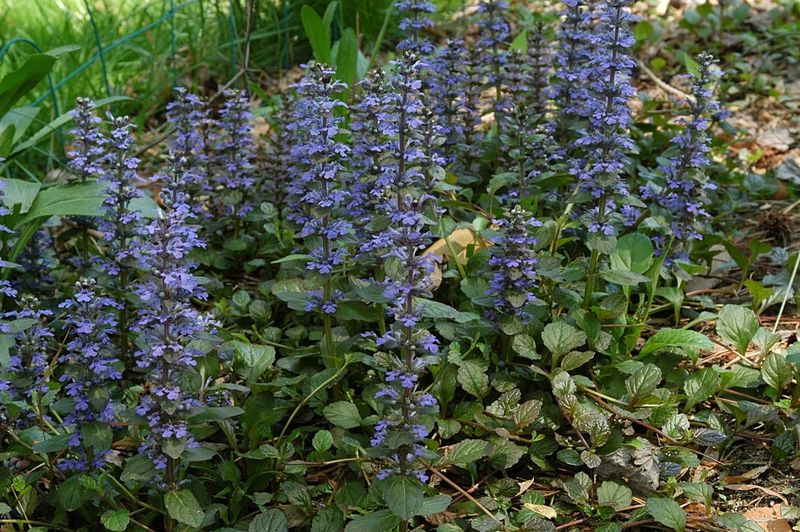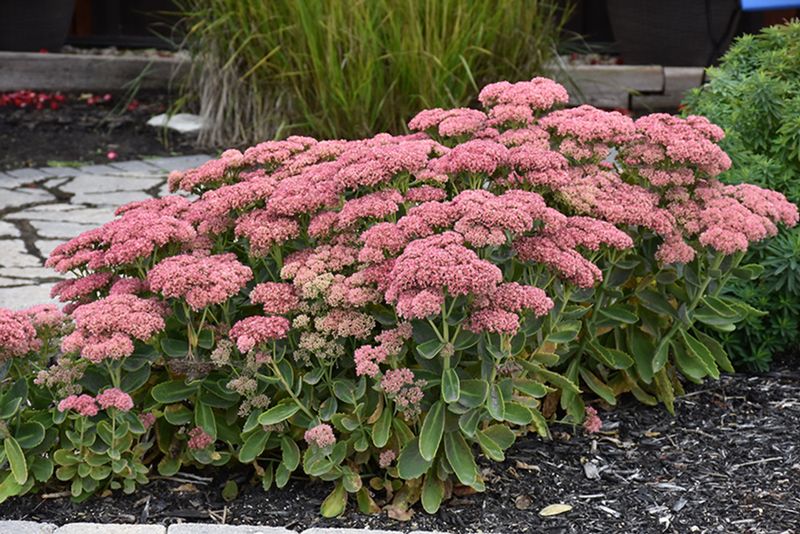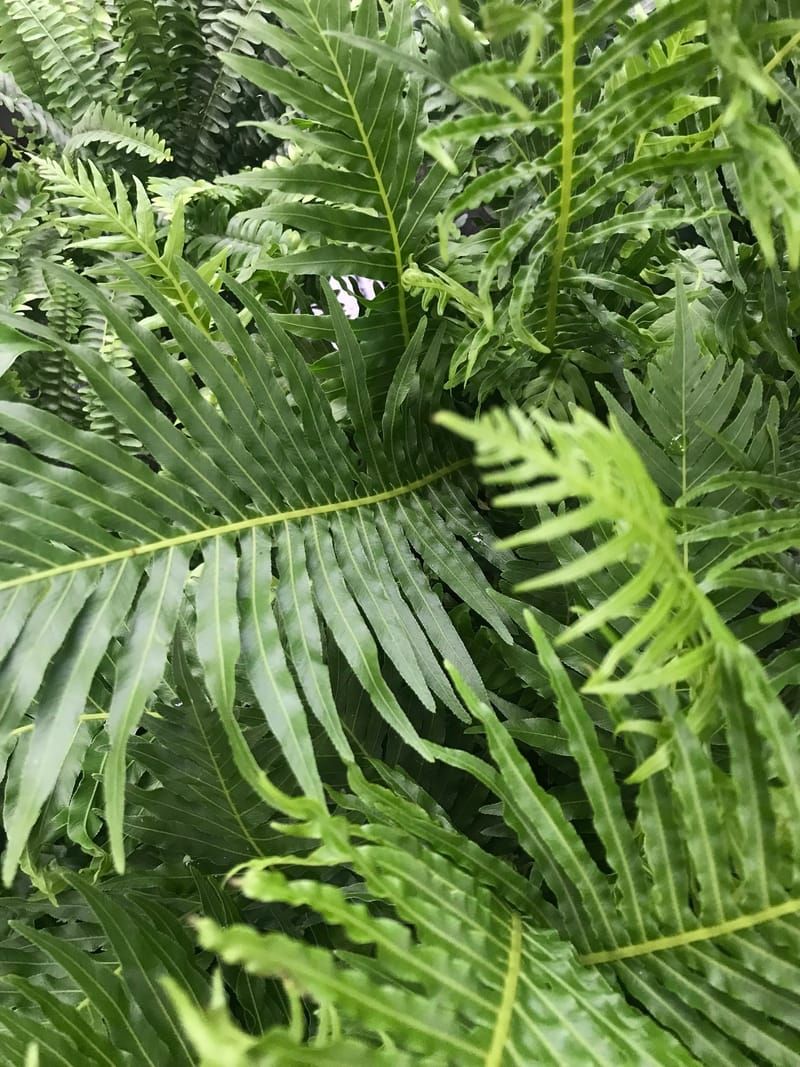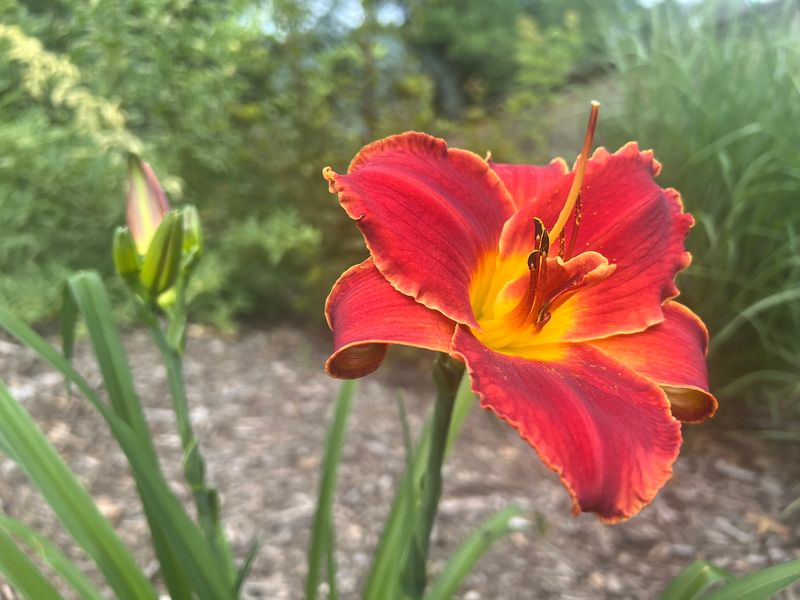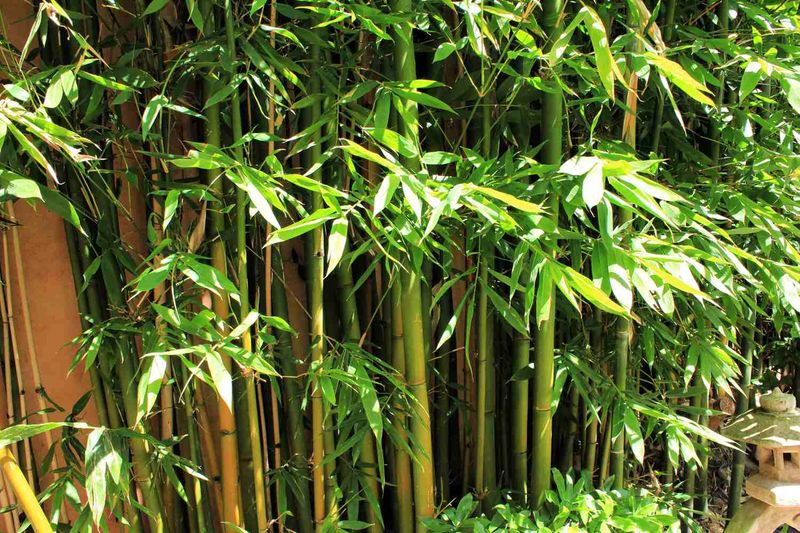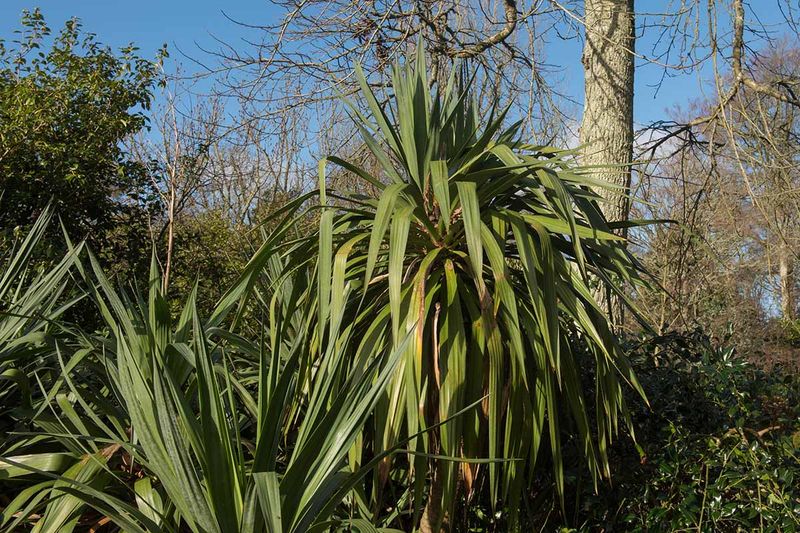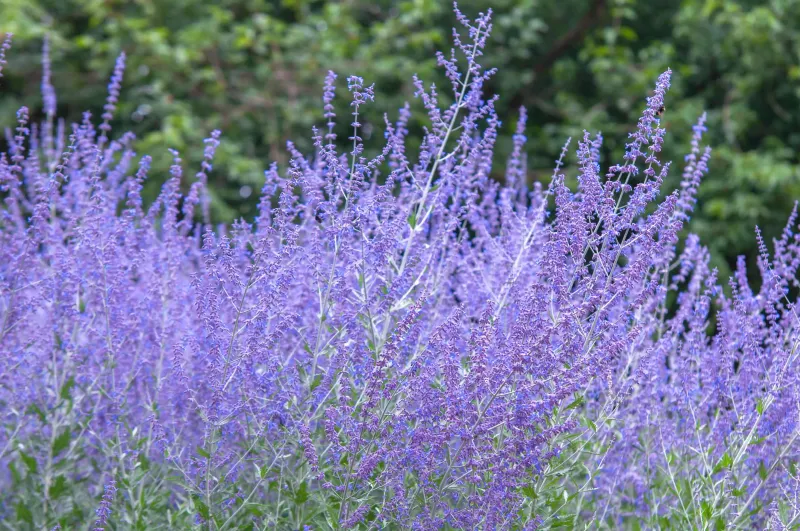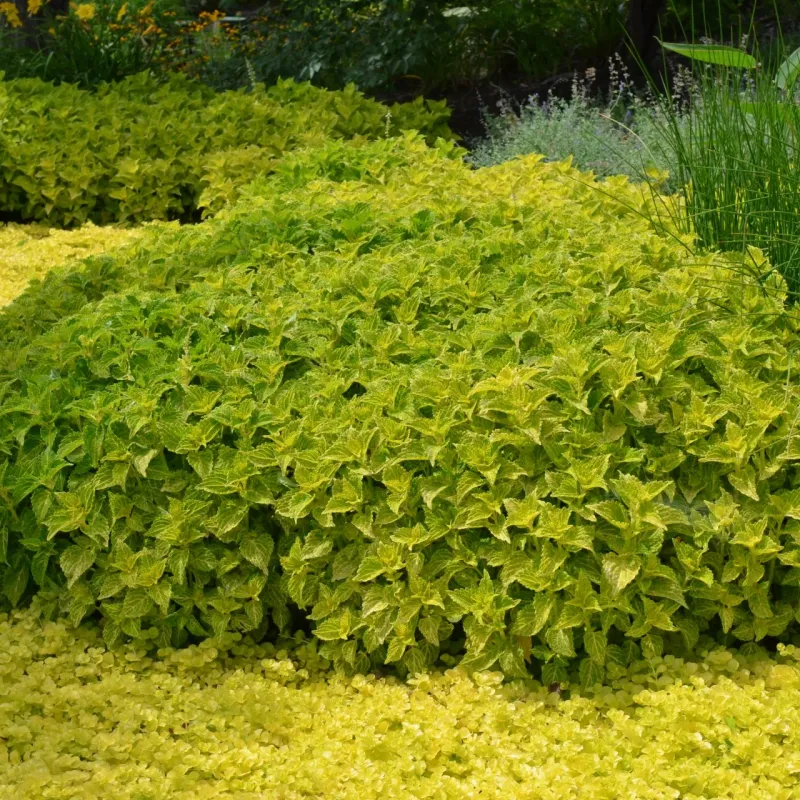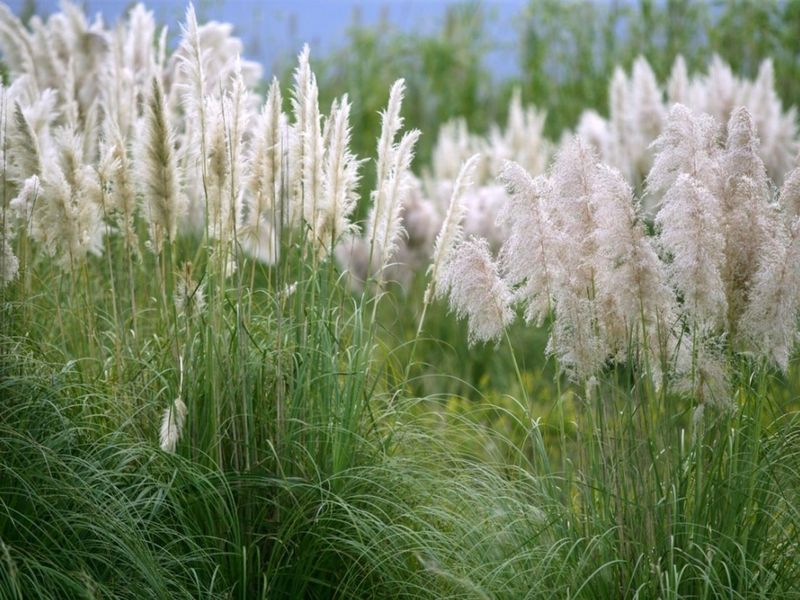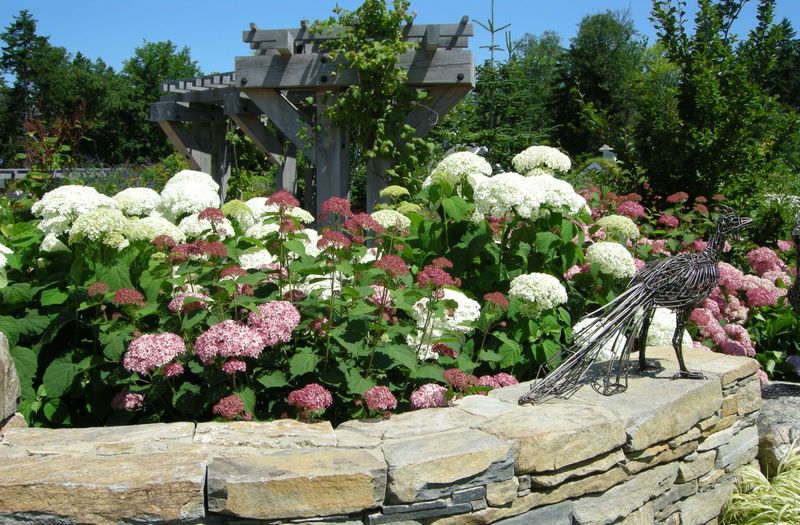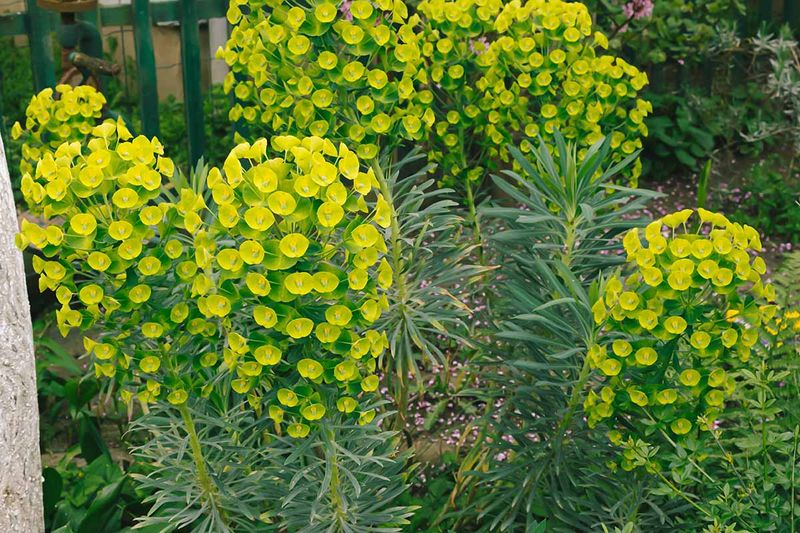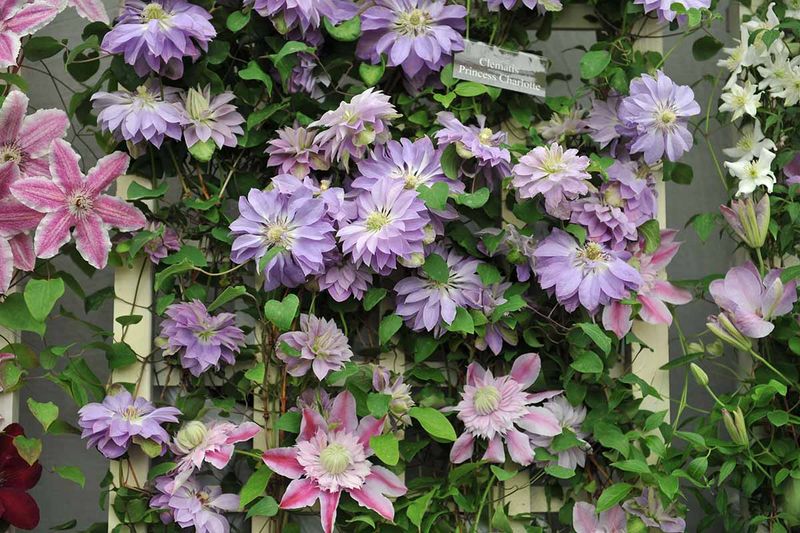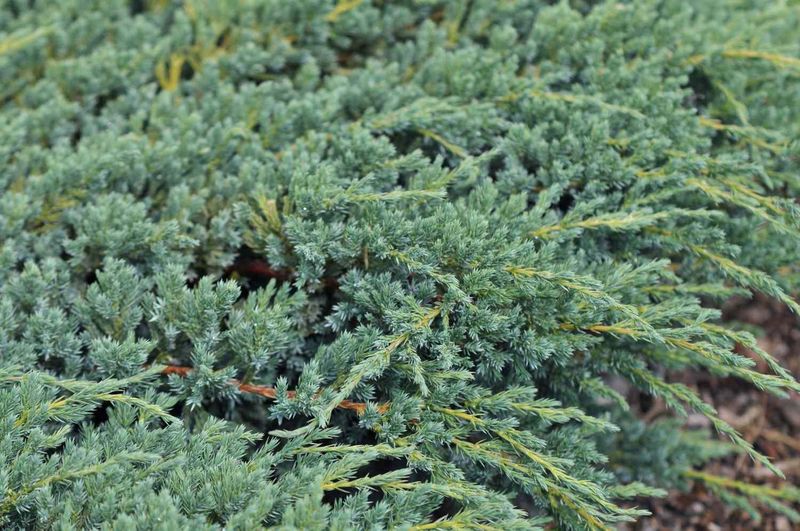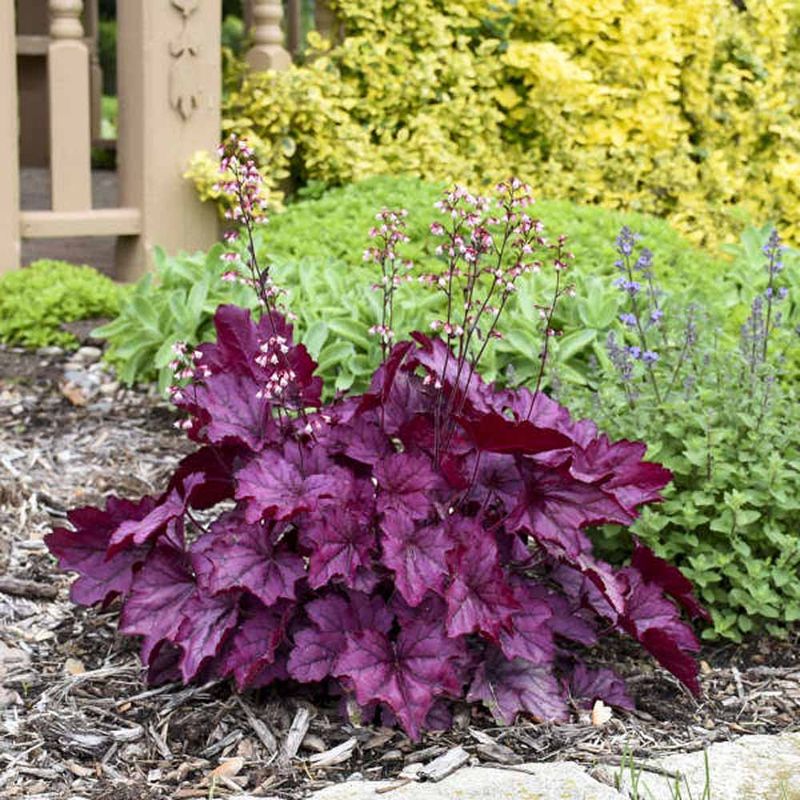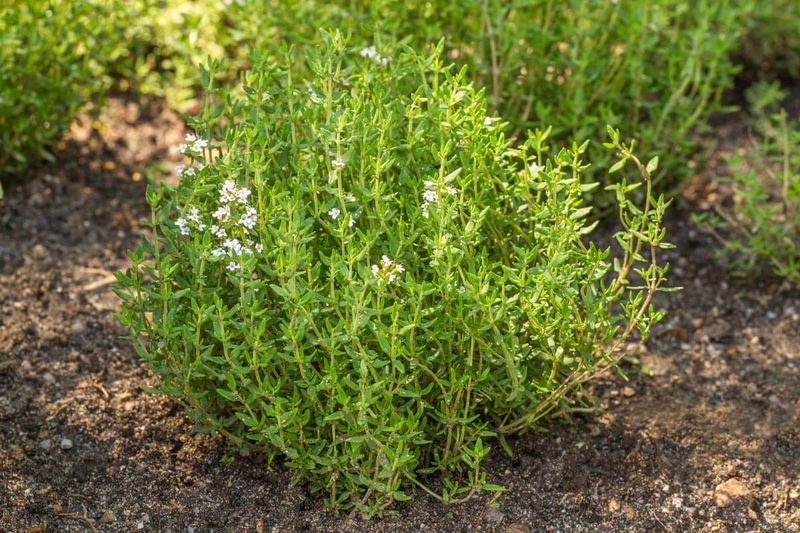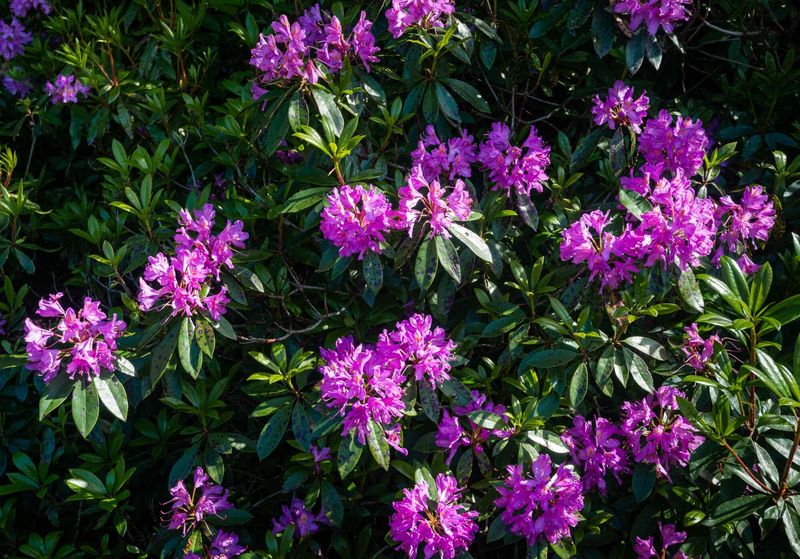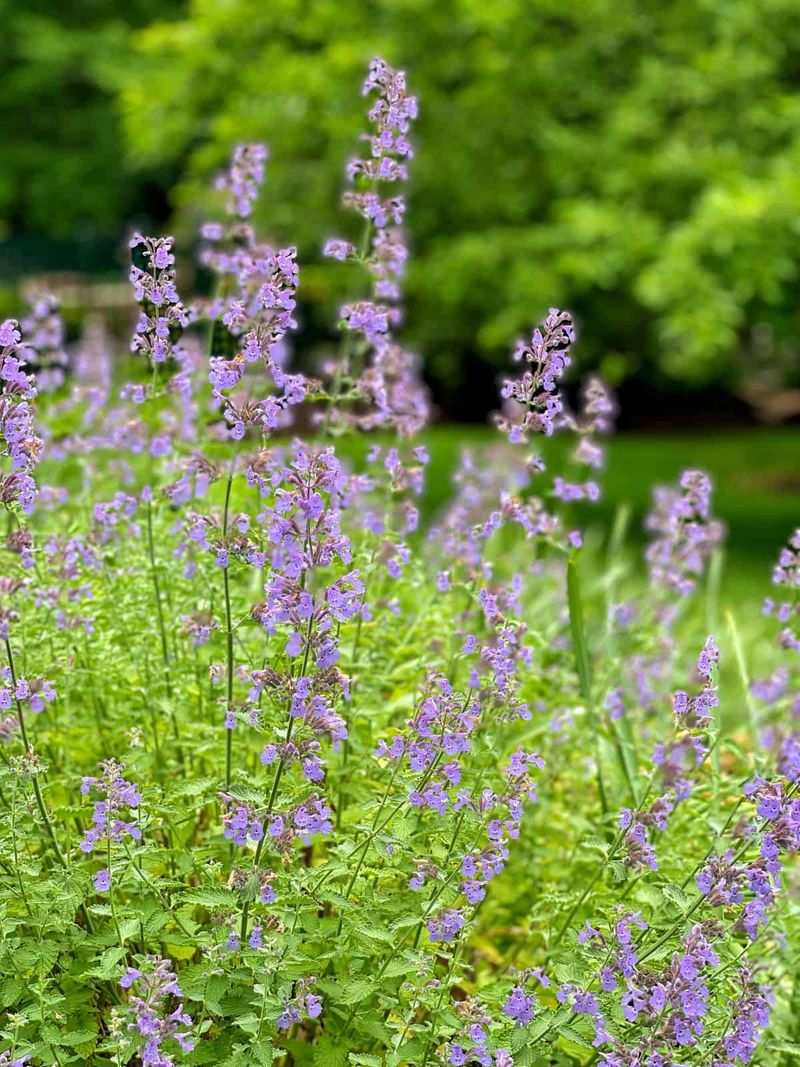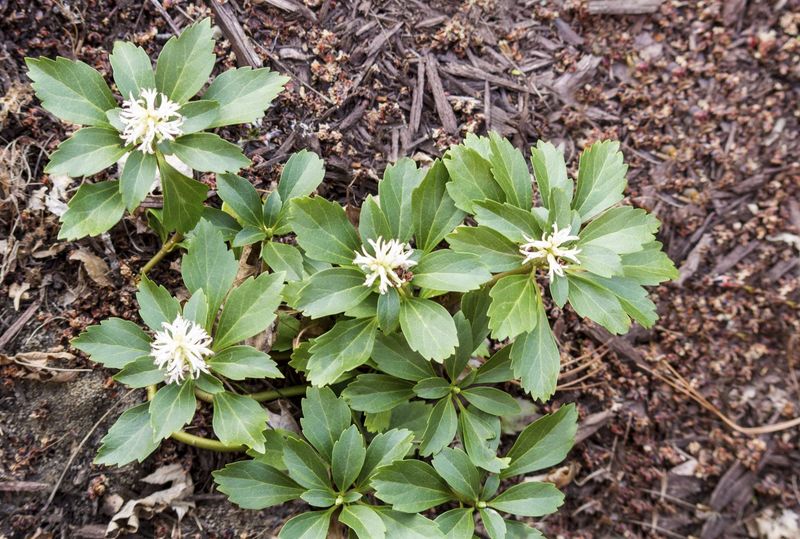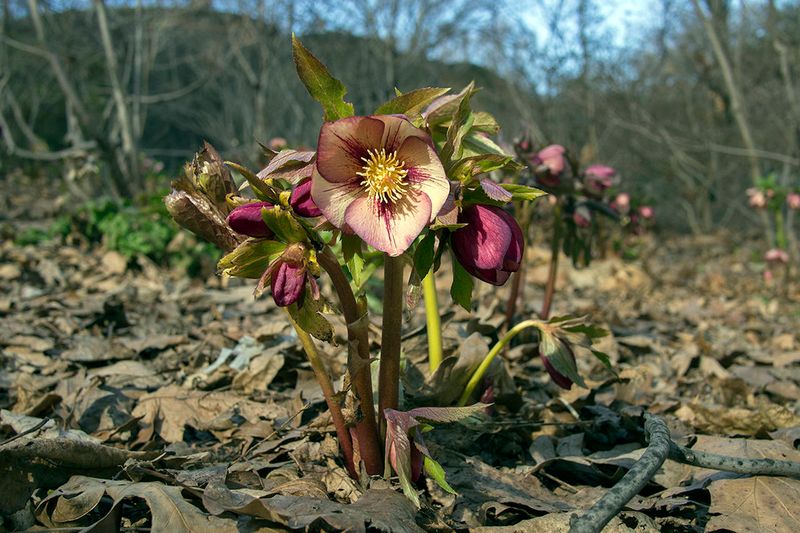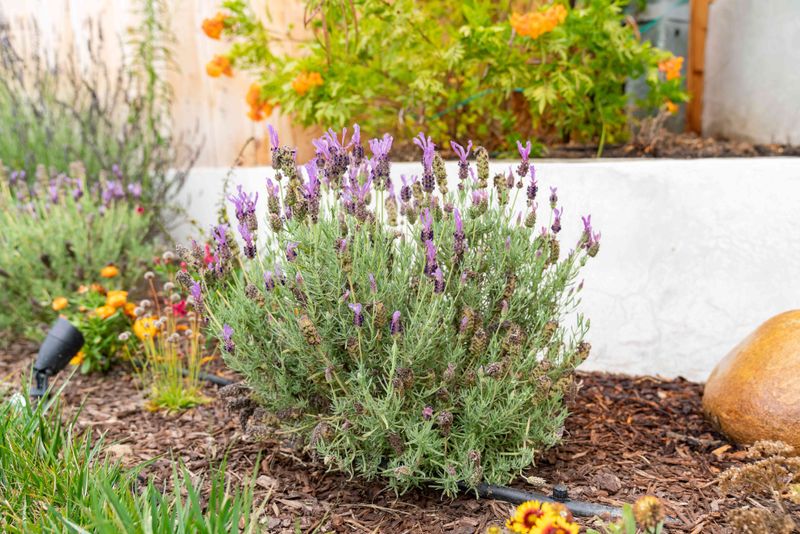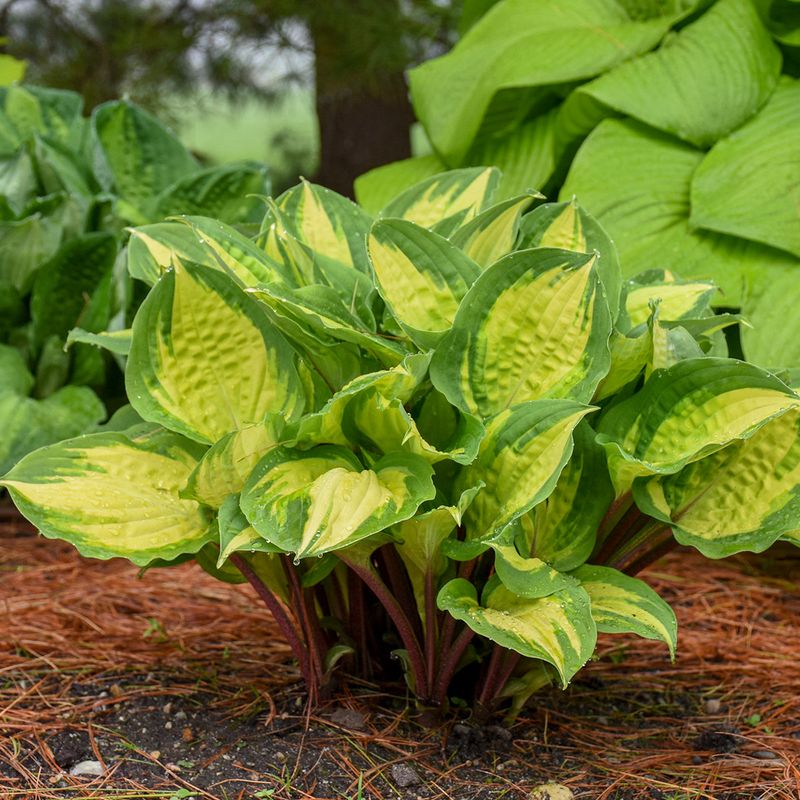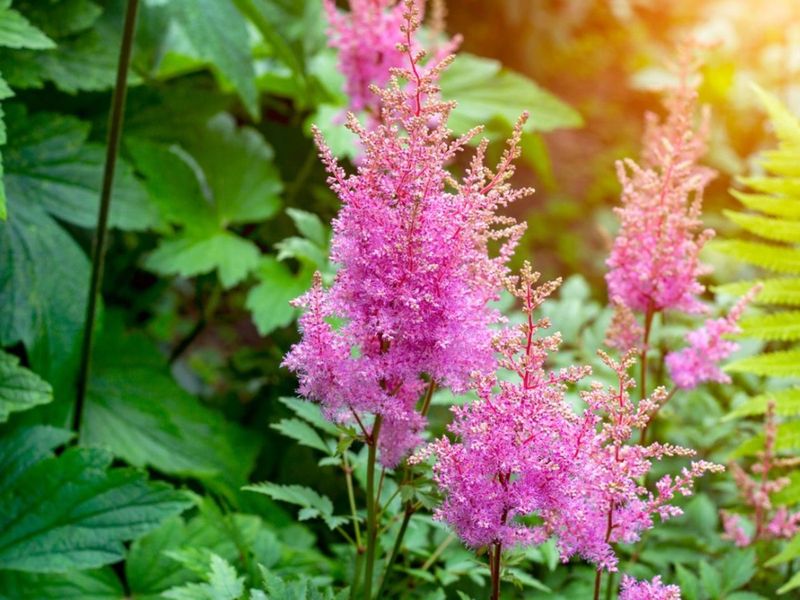Landscaping presents unique challenges, especially when confronted with difficult areas that resist traditional planting. Landscapers, however, wield a secret arsenal: problem-area plants.
These versatile, resilient champions can transform the most challenging garden spots into thriving, beautiful spaces.
Whether dealing with shade, poor soil, or extreme weather, there’s a plant for every predicament. Join us as we explore 22 remarkable plants that landscapers use to conquer the toughest terrains.
1. Ajuga
Ajuga is a versatile ground cover ideal for shady, moist areas. Its dark, glossy leaves and blue flower spikes bring color to bare patches. Ajuga adapts well to various soil types, including clay.
This hardy plant suppresses weeds, reducing maintenance needs in gardens. It’s perfect for edging paths or filling spaces beneath trees.
Landscapers appreciate ajuga for its rapid spread and resilience, making it a reliable choice for problem areas. Its colorful foliage and ease of care ensure it remains a popular ground cover.
2. Sedum
Sedums are succulent plants that excel in rocky, dry conditions. With their ability to store water in leaves, they thrive where others wilt. Their colors range from green to deep red, offering visual diversity.
Sedums require little maintenance, making them perfect for busy landscapers looking to fill space with minimal effort. They’re also excellent for erosion control on slopes.
These plants attract butterflies, adding another layer of life to the garden. Whether in rock gardens or as ground cover, sedums are hardworking and dependable.
3. Ferns
Ferns are quintessential for shady, moist areas where other plants falter. Their delicate fronds create a lush, green carpet that complements woodland settings. They thrive in the cool, damp conditions of undergrowth.
Easy to maintain, ferns require little more than occasional watering and mulching. They also help prevent soil erosion with their dense root systems.
With countless varieties to choose from, ferns offer a range of textures and sizes, ensuring there’s a perfect fit for every landscape. Their timeless beauty adds depth and tranquility to gardens.
4. Daylilies
Daylilies are the answer to poor soil and neglect. These hardy perennials burst with color, offering blooms in a spectrum of shades. Ideal for areas with depleted soil, they are extraordinarily resilient.
Landscapers appreciate their minimal care requirements and ability to naturalize, filling spaces quickly. Their long blooming period ensures continuous color throughout the summer.
Daylilies’ adaptability to various conditions makes them a staple in gardens needing a splash of low-maintenance color. They’re perfect for borders, slopes, and any area needing a quick lift.
5. Bamboo
Bamboo is the ultimate solution for privacy screens and windbreaks. Fast-growing and resilient, bamboo can transform open spaces into tranquil retreats. Its tall, slender stalks create a natural fence that sways elegantly.
Landscapers value bamboo for its ability to thrive in diverse conditions, from marshy ground to dry plains. It’s also a renewable resource, growing quickly and providing material for various uses.
While some species can be invasive, clumping varieties offer controlled growth. Bamboo’s aesthetic and practical benefits make it an attractive choice for problem areas.
6. Yucca
Yucca plants are desert dwellers, thriving in hot, arid environments where other plants fail. With their striking, sword-like leaves and towering flower spikes, they add drama to landscapes.
Yuccas are drought-tolerant and require little maintenance once established. Their unique appearance makes them focal points in dry gardens.
Beyond aesthetics, yuccas are useful for erosion control on sandy soils. Their deep roots stabilize the ground, preventing washouts. Yucca’s adaptability to harsh conditions ensures they remain a favorite among landscapers working in arid areas.
7. Russian Sage
Russian sage is a go-to for sunny, dry spots. Its silvery foliage and purple spikes provide color and texture in challenging areas. Known for its drought resistance, it’s perfect for xeriscaping.
Beyond its beauty, Russian sage is a magnet for bees and butterflies, adding ecological value. It thrives in poor soils, requiring minimal water once established.
Landscapers appreciate its long blooming season, which extends the visual appeal throughout summer and into fall. Russian sage’s resilience and low maintenance make it an ideal choice for difficult landscapes.
8. Creeping Jenny
Creeping Jenny is a ground cover superstar, ideal for filling spaces in damp areas. Its bright green, cascading foliage adds a cheerful touch to gardens. It thrives in moist, shady conditions where other plants struggle.
Easy to grow, creeping Jenny requires little maintenance and quickly covers bare ground, helping to suppress weeds. Its vibrant color makes it a popular choice for borders and rock gardens.
Landscapers use it to add texture and color to water features and ponds. Creeping Jenny’s adaptability ensures it remains a favorite for challenging spots.
9. Ornamental Grasses
Ornamental grasses are versatile and resilient, thriving in a range of environments from dry sandy soils to heavy clay. Their graceful movement and varying textures add dynamic interest to gardens.
These grasses require minimal maintenance and are drought-tolerant, making them a sustainable choice for eco-friendly landscapes. They also provide habitat for wildlife.
Landscapers use them to soften hardscapes, fill large areas, or create privacy screens. With a diverse array of species, ornamental grasses offer endless possibilities for transforming problem areas into stunning displays.
10. Hydrangea
Hydrangeas are show-stoppers in shaded, moist areas. Their large, vibrant blooms add pops of color where light is limited. These shrubs thrive in rich, well-drained soil but can adapt to less ideal conditions.
Hydrangeas’ ability to change bloom color based on soil acidity fascinates gardeners, providing a unique interactive experience. They require moderate watering and occasional pruning.
Landscapers favor them for their dramatic floral displays throughout summer. Hydrangeas’ adaptability to shade and their spectacular blooms make them a top choice for problem areas needing color.
11. Euphorbia
Euphorbias are architectural marvels, perfect for rocky, well-drained soils. Their unique shapes and vibrant, yellow-green flowers add intrigue to gardens. Known for drought resilience, they thrive where many plants fail.
Their low maintenance needs and unique appearance make them favorites among landscapers looking for unusual accents. Euphorbias are also deer-resistant, protecting gardens from unwanted visitors.
These plants are versatile, suitable for borders, containers, or as focal points. Their striking forms and hardy nature ensure they remain popular in challenging landscapes.
12. Clematis
Clematis vines bring vertical interest to gardens, perfect for covering unsightly structures or adding height. With flowers in countless colors, they transform dull areas into vibrant displays.
Known for their adaptability, clematis can thrive in a variety of conditions, preferring sunny spots with cool roots. They require regular watering and support for climbing.
Landscapers use them to soften fences, walls, and trellises. Clematis’ ability to provide lush floral displays with minimal space makes them invaluable for small or awkward garden areas.
13. Juniper
Junipers are evergreens that conquer rocky, dry slopes with ease. Their needle-like foliage ranges in color, adding visual interest across seasons. Excellent for erosion control, their roots stabilize soil effectively.
These hardy shrubs require minimal water once established, making them ideal for low-maintenance landscapes. Junipers also offer winter interest with their persistent foliage.
Landscapers use them as ground cover, in borders, or as standalone features. Their diversity in form and color ensures junipers remain versatile tools for managing difficult garden areas.
14. Heuchera
Heuchera, or coral bells, bring color to shaded spots where flowers might fade. Their foliage ranges from deep purples to bright greens, providing year-round interest. Heuchera thrives in rich, well-drained soil.
These perennials are easy to care for, requiring minimal maintenance and occasional dividing. Their ability to tolerate shade makes them perfect for woodland gardens.
Landscapers appreciate heuchera for their versatility in borders, containers, and as ground cover. Their vibrant leaves and hardiness make them a favorite for adding color to problem areas.
15. Thyme
Thyme is a robust herb that thrives in sunny, dry conditions where other plants falter. Its tiny leaves create a dense mat, and in summer, it produces delicate pink flowers.
Ideal for rock gardens or as ground cover, thyme is low-maintenance and drought-resistant. It also attracts beneficial insects, enhancing garden biodiversity.
Beyond its beauty, thyme offers culinary uses, making it a practical choice for edible landscapes. Landscapers use it for its aromatic qualities and ability to cover difficult, sunny spots with minimal care.
16. Rhododendron
Rhododendrons thrive in shaded, acidic soils, providing lush, evergreen foliage and spectacular blooms. Their large flower clusters bring drama to woodland gardens.
These shrubs prefer cool, moist conditions and require minimal pruning to maintain their shape. Their ability to bloom profusely in shade makes them invaluable in low-light areas.
Landscapers use rhododendrons for their ability to create natural boundaries and add color to shady spots. Their evergreen nature and stunning blooms make them a perennial favorite in challenging garden areas.
17. Catmint
Catmint is a charming solution for dry, sunny borders. Its aromatic foliage and lavender-blue blooms attract pollinators, adding life to gardens. Known for drought tolerance, catmint thrives where water is scarce.
Landscapers favor catmint for its low-maintenance nature and long blooming period. It’s perfect for cottage gardens or as edging for paths.
Beyond beauty, catmint is also deer-resistant, protecting gardens from browsing. Its combination of resilience and aesthetic appeal makes catmint a staple for transforming difficult spots.
18. Pachysandra
Pachysandra excels as a ground cover in shaded, moist areas. Its glossy green leaves create a dense mat that suppresses weeds and prevents erosion. Pachysandra thrives in various soil types, including heavy clay.
Requiring minimal care, it’s perfect for filling spaces beneath trees or along shaded paths. Landscapers use it for its ability to cover large areas quickly and effectively.
Its evergreen nature provides year-round interest, making pachysandra a reliable choice for problem areas needing a low-maintenance solution.
19. Hellebore
Hellebores are the jewels of winter gardens, blooming when most plants are dormant. Their nodding flowers in shades of white, pink, and green bring color to shaded, well-drained areas.
These perennials are hardy and low-maintenance, thriving in the cool, moist conditions of woodland gardens. Their evergreen foliage adds year-round interest.
Landscapers value hellebores for their early blooms and ability to thrive under trees. Their resilience and beauty make them indispensable for adding winter charm to challenging spots.
20. Lavender
Lavender is synonymous with sunny, dry landscapes. Its fragrant blooms and silvery foliage make it a favorite for adding color and scent. Landscapers love lavender for its drought tolerance and hardiness.
It’s an excellent choice for rocky, well-drained soils where other plants struggle. Besides its visual appeal, lavender attracts pollinators, making gardens lively and buzzing with life.
Additionally, its essential oils can be harvested for various uses, from aromatherapy to culinary applications. Lavender’s resilience and charm make it a versatile addition to any garden.
21. Hosta
Hostas are the unsung heroes of shaded gardens. Their lush foliage thrives where sunlight seldom reaches, making them ideal for dimly lit corners. The broad leaves come in an array of greens and variegated patterns, adding visual interest.
Despite their beauty, hostas are low-maintenance, needing minimal care once established. They pair well with ferns and other shade lovers, creating a serene woodland atmosphere.
In addition to aesthetics, hostas also help suppress weeds, a bonus for busy gardeners. Their ability to thrive in the shade makes them indispensable in landscape design.
22. Astilbe
Astilbes are a delight in shaded, moist gardens. Their feathery plumes in pink and white add height and texture to landscapes. They thrive in rich, well-drained soil, requiring minimal care.
These perennials are perfect for planting alongside water features or in woodland settings. Their long-lasting blooms provide color from late spring to summer.
Landscapers appreciate astilbe for their ability to brighten low-light areas. Their unique form and ease of care ensure astilbes remain a popular choice for challenging garden spaces.
